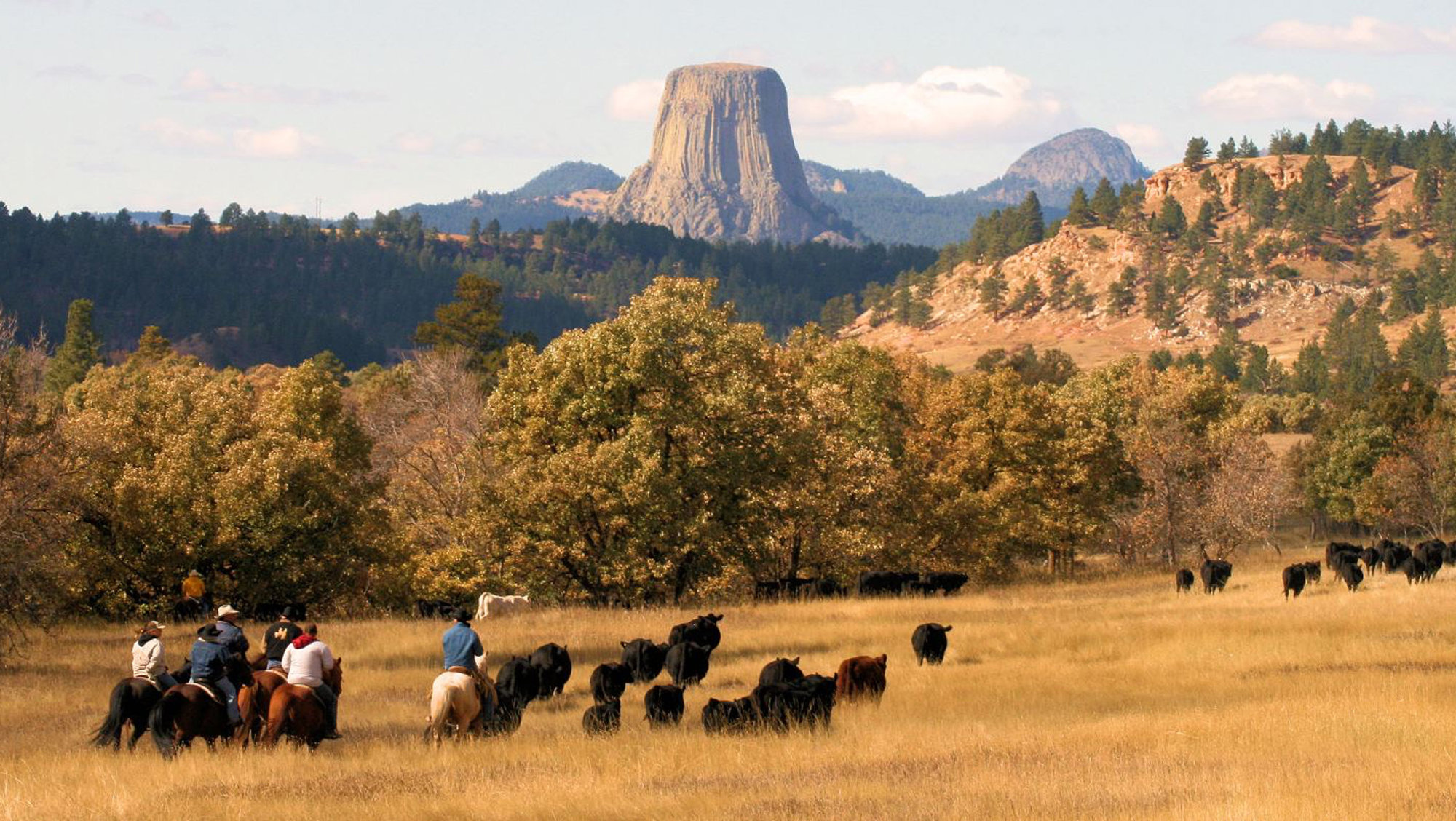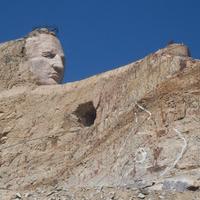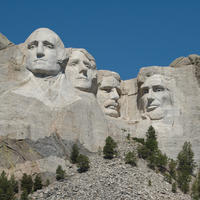More about Black Hills National Forest
Works at Black Hills National Forest

Contributor
Black Hills National Forest is a wrenching history of contested land lost.
Black Hills National Forest rises from South Dakota’s vast plains, next to the famous South Dakota Badlands (which were originally named by the Lakota Sioux in reference to their extreme, inhospitable terrain). The Lakota dubbed the hills paha sapa, or “hills that are black,” for their dense coating of evergreen trees. Wild though they may be, they’re a hospitable home to some creatures (elk and mountain lions and coyotes, oh my!).
These forests have been contested territory for centuries. They’re known to have been inhabited early on by tribes including the Cheyenne, Arikara, and Crow. Everyone (except the Cheyenne) was booted out in the mid-18th century when the Lakota Sioux came to town and became the predominant inhabitants. The Black Hills are shrouded in myth and are said by Sioux tribes to have spiritual properties. They saw the Black Hills as the heart of their nation.
The next few decades were a wild west sh*t show. For a while, the Black Hills remained somewhat off-limits to white settlers. Lewis and Clark even avoided this territory on their famed expedition because they knew it was sacred Lakota land. But even after the Laramie Treaty passed (which temporarily granted Native American tribes some jurisdiction over midwestern territories), Sioux tribes weren’t safe from unwelcome visitors. As fur trading and westward expansion became more and more practiced, white folks encroached on Lakota land more and more frequently, sometimes resulting in bloody confrontations.
Things really came to a head when General George A. Custer led an army expedition into the Black Hills and discovered gold in 1874. This, of course, blew the lid off of already icy settler-Lakota relations. Now that money was at stake, all bets were off. Whites arrived in pursuit of riches, and not-so-gently forced native people out to reservations. The Black Hills sprouted rough-and-tumble frontier towns (like the real life Deadwood) where traders, prospectors, and Calamity Jane passed through in search of fortune.
But still, legal disputes persist. In 1980 a little bit of measly justice was served when the Supreme Court ruled the Sioux had been robbed of their land, and set up a trust as compensation. That trust is now worth around $1.3 billion, but since the Black Hills haven’t been fully restored to them, the Sioux haven’t touched the money on principle. If you visit the Black Hills today, you’ll see that tourists abound--you can do everything from hiking to spelunking to wine tasting to Mount Rushmore-ogling.
Sources
- “7 Unexpected Things You’ll See in the Black Hills National Forest.” Travel South Dakota. Accessed December 22, 2017. https://www.travelsouthdakota.com/explore-with-us/spotlights/7-unexpect…
- “A Brief History.” USDA Forest Service. Accessed December 21, 2017. https://www.fs.usda.gov/detail/blackhills/about-forest/?cid=STELPRDB511…
- “Animals.” USDA Forest Service. Accessed December 21, 2017. https://www.fs.usda.gov/detail/blackhills/learning/nature-science/?cid=…
- Epstein, Justine. “Black Hills--Stories of the Sacred.” Colorado College. November 2012. Accessed December 21, 2017. http://sites.coloradocollege.edu/indigenoustraditions/sacred-lands/the-…
- Glusac, Elaine. “Road Trip: The Black Hills of South Dakota.” National Geographic. September 14, 2010. Accessed December 22, 2017. https://www.nationalgeographic.com/travel/road-trips/black-hills-south-…
- LeGro, Tom. “Why the Sioux are refusing $1.3 Billion.” PBS News Hour. August 24, 2011. Accessed December 31, 2017. https://www.pbs.org/newshour/arts/north_america-july-dec11-blackhills_0…
- “Native American Culture and the Black Hills 1750-1865.” Black Hills Visitor. Accessed December 21, 2017. https://blackhillsvisitor.com/learn/native-american-culture-and-the-bla…
- “Native American Culture & the Black Hills Until 1759.” Black Hills Visitor. Accessed December 21, 2017. https://blackhillsvisitor.com/learn/native-american-culture-the-black-h…
Featured Content
Here is what Wikipedia says about Black Hills National Forest
Black Hills National Forest is located in southwestern South Dakota and northeastern Wyoming, United States. The forest has an area of over 1.25 million acres (5,066 km2) and is managed by the Forest Service. Forest headquarters are located in Custer, South Dakota. There are local ranger district offices in Custer, Rapid City, and Spearfish in South Dakota, and in Sundance, Wyoming.
Predominantly ponderosa pine, the forest also includes hard woods like aspen, bur oak, and birch. The lower elevations include grassland prairie, but the National Forest System lands encompass most of the mountainous region known as the Black Hills of South Dakota and Wyoming. Within the forest is Black Elk Peak which is the tallest mountain in South Dakota and the highest peak east of the Rocky Mountains in the United States.
Check out the full Wikipedia article about Black Hills National Forest













Thank you for sharing!
- Cheryl